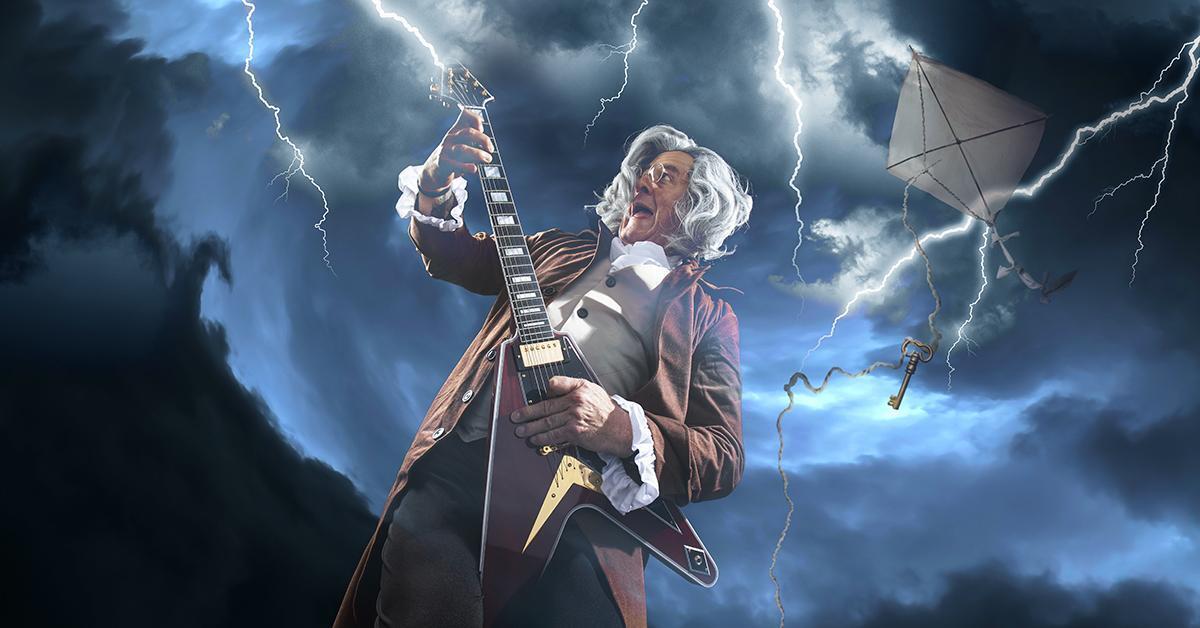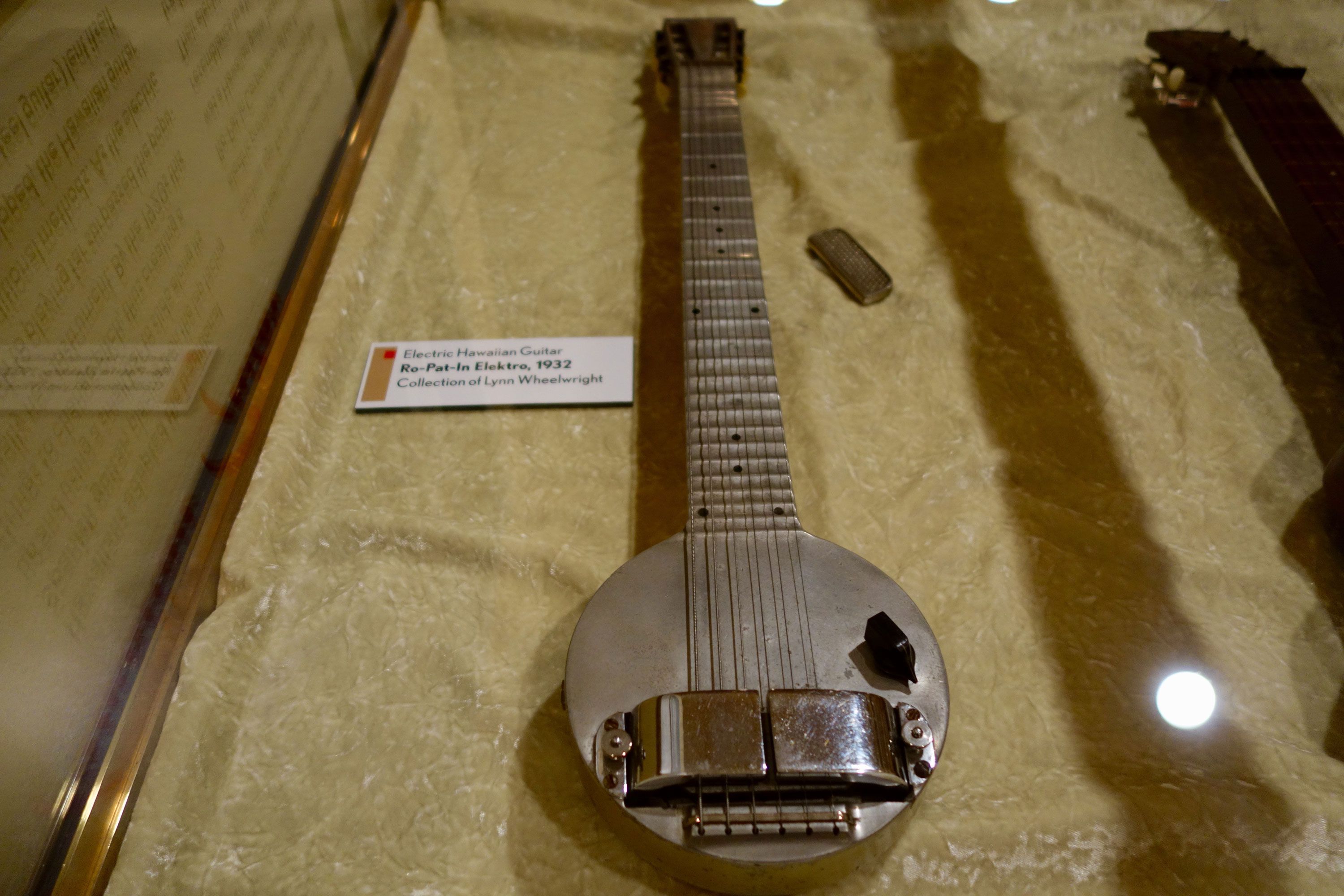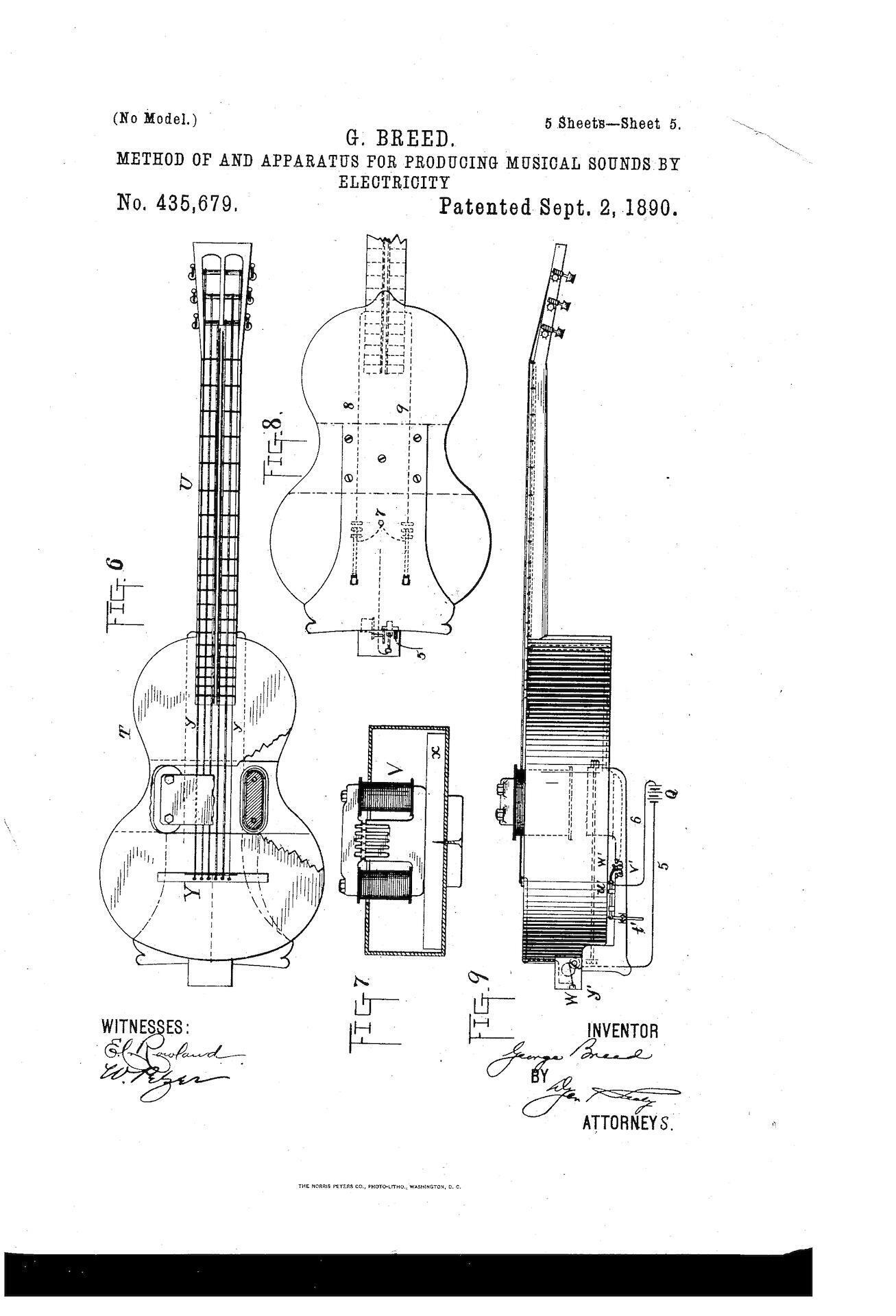The electric guitar was first introduced in the 1930s. George Beauchamp and Adolph Rickenbacker created the first modern electric guitar in 1931.
Exploring the dynamic history of the electric guitar unveils a revolution in the music industry. This stringed instrument, powered by electromagnetic pickups, transformed the soundscapes of genres from blues to rock. Its invention heralded a new era for musicians, allowing them to amplify their music and reach larger audiences.
The electric guitar quickly became a symbol of musical innovation, embraced by trailblazers and legends who pushed the boundaries of its capabilities. Its impact resonates through the iconic riffs and solos that have become ingrained in popular culture. As a bastion of modern music, the electric guitar continues to evolve, inspiring new generations of artists and enthusiasts alike.

Credit: www.sweetwater.com
Introduction To The Electric Guitar
The electric guitar is more than just a musical instrument—it is an icon of modern music that has reshaped genres and defined new ones. Its vibrant timbre and versatile range have captured the hearts of artists and audiences alike. Originating in the early 20th century, the electric guitar has undergone significant evolution, leading to the dynamic models we see today. This revolutionary instrument not only pushed the boundaries of sound but also played a crucial role in the development of rock ‘n’ roll, blues, and many other music styles that are now integral to our cultural soundtrack.
Defining The Electric Guitar
An electric guitar is a stringed musical instrument equipped with electromagnetic pickups that convert the vibration of the strings into electrical signals. These signals are then amplified and projected through a loudspeaker, creating a powerful presence on stage and in recordings. Unlike acoustic guitars, electric guitars require external amplification to produce sound at performance levels. Their solid or semi-hollow bodies, combined with the electromagnetic pickup system, allow for a wide spectrum of tones well-suited to a range of musical genres.
The Significance Of The Electric Guitar In Modern Music
The impact of the electric guitar on modern music cannot be overstated. Through its expressive capabilities, it has become a cornerstone of contemporary music. Legends like Jimi Hendrix, Eric Clapton, and Eddie Van Halen have explored and expanded the electric guitar’s potential, inspiring countless musicians. Its ability to cut through ensembles and command attention has made it a go-to instrument for leading melodies and solos, while its rhythmic potential bolsters bands with compelling harmony and groove. Breathed to life in diverse genres—from rock and metal to jazz and funk—the electric guitar continues to be a pivotal force in the sonic landscape of today.
The Invention And Development Of The Electric Guitar
The electric guitar stands as a symbol of rebellion, innovation, and the undying spirit of rock ‘n’ roll. Since its inception, it has transformed the soundscape of music, electrifying audiences worldwide. The journey from acoustic strums to amplified riffs is a tale of ingenious minds pushing the boundaries of technology. In the following sections, we’ll explore the pivotal moments that defined the invention and development of the electric guitar.
Early Attempts And Prototypes
In the early 20th century, the quest for volume in live performances led to the birth of amplified instruments. Early attempts to enhance the sound of traditional guitars involved rudimentary attachments and experiments with electro-magnetic pickups. These prototypes laid the groundwork for what would become one of the most iconic instruments in music history.
The Role Of George Beauchamp And Adolph Rickenbacker
Two pioneers, George Beauchamp and Adolph Rickenbacker, played an essential part in the maturation of the electric guitar. Together, they experimented with magnetic pickups and the amplification of string vibrations. Beauchamp’s vision for a guitar that could produce sound electrically led to the creation of the “Frying Pan”, a landmark in electric guitar design developed in the early 1930s.
The First Commercially Successful Electric Guitar
The Rickenbacker “Frying Pan”, developed in 1931, is widely acknowledged as the first commercial electric guitar. Its aluminum body and horseshoe magnet pickup became a popular choice among Hawaiian music bands, which required a guitar with more projection and volume. This innovation sparked a rapid evolution in the design and production of electric guitars.
Key Developments And Innovators Through The Decades
- 1930s: Introduction of the Rickenbacker “Frying Pan” and other early electric models.
- 1940s: Les Paul created “The Log,” a prototype for solid body electric guitars, which led to the production of the famous Gibson Les Paul.
- 1950s: Leo Fender introduced the Fender Broadcaster, later known as the Telecaster, the first mass-produced solid-body electric guitar which revolutionized the market.
- 1960s: The popularity of rock ‘n’ roll boosted electric guitar sales; iconic models like the Fender Stratocaster and Gibson SG dominated the scene.
- 1970s and beyond: Brands like Ibanez, PRS, and Jackson contributed to the diversity of electric guitar designs, catering to a growing array of musical styles and genres.
Each decade brought forth new innovators who introduced groundbreaking technologies and features, from multi-pickup configurations and tremolo systems to locking nuts and advanced electronic circuitry.
Evolution Of Electric Guitar Design
The electric guitar, an instrument synonymous with musical revolutions across genres, has a design history as rich and vibrant as the music it helps create. From its inception in the 1930s, the electric guitar has undergone continuous transformation, mirroring advancements in technology and the changing tastes of musicians. This look-back at its design evolution reveals an instrument that has both shaped and adapted to the sonic landscape of modern music.
Solid Body Versus Hollow Body Designs
The electric guitar began its life divided into two main design philosophies: solid body and hollow body. Solid body guitars, first conceptualized to address feedback issues associated with hollow bodies, quickly became the foundation for rock and roll’s raucous tones. The solid wood construction provided a sustained, clear sound favored by many guitarists. In contrast, hollow body guitars, with resonant cavities, offered warmer tones more akin to acoustic guitars, thus appealing to jazz and blues artists.
- Solid Body:
- Less Feedback
- Sharpe, Sustain-rich Sounds
- Preferred for Rock, Metal, and Pop
- Hollow Body:
- Natural acoustic resonance
- Rich, Warm Tones
- Ideal for Jazz and Blues
The Emergence Of Iconic Models From Fender And Gibson
Two titans in the guitar world, Fender and Gibson, took center stage as they introduced models that would become the backbone of the electric guitar industry. Fender’s Telecaster and Stratocaster, and Gibson’s Les Paul and SG, each brought unique shapes, sounds, and playability to the forefront, becoming synonymous with different musical identities.
| Brand | Model | Year Introduced | Genre Association |
|---|---|---|---|
| Fender | Telecaster | 1950 | Country, Rock |
| Fender | Stratocaster | 1954 | Rock, Blues |
| Gibson | Les Paul | 1952 | Rock, Jazz |
| Gibson | SG | 1961 | Rock, Metal |
Technological Advancements In Pickups And Electronics
As electric guitars evolved, so did the technology embedded within. Pickups, the electromagnetic heart of the electric guitar, transformed significantly. From the single-coil’s bright clarity to the humbucker’s rich, noise-cancelling quality, innovations in pickup technology have deeply influenced guitar design and functionality. On-board electronics, like tone shaping circuits and active pickups, vastly expanded the sonic possibilities for guitarists around the world.
- Single-Coils – Clear, Bright Tone
- Humbuckers – Rich, Full, Noise-free Sound
- Active Electronics – On-board EQ and Signal Boosting
The Effect Of Player Preferences On Design Evolution
Players are the lifeblood of the electric guitar’s design evolution. Their preferences for sound, playability, and aesthetics have directly affected design trends. Guitarists seeking slimmer necks, lighter bodies, or advanced tremolo systems often found companies willing to incorporate these features. Custom shop models and signature guitars became a conduit for these innovations, reflecting the diverse needs of players across genres.
Icons such as Eddie Van Halen, with his penchant for “hot-rodding” guitars, influenced manufacturers to produce performance-ready guitars straight out of the box. Djent guitarists’ preference for extended-range instruments pushed the creation of seven, eight, and even nine-string guitars, charting new territories in design.
- Shred-friendly Neck Profiles
- Lightweight Body Designs
- Advanced Tremolo Systems
- Extended-Range Guitars (7+ Strings)

Credit: www.popularmechanics.com
Impact Of The Electric Guitar On Music And Culture
The advent of the electric guitar revolutionized the world of music and left an indelible mark on global culture. Its creation brought forth a new era of soundscapes, amplifying emotions and giving birth to iconic riffs that would define generations. But the impact of the electric guitar stretches far beyond musical notes; it became an integral part of the social fabric and a potent symbol within various cultural movements. Let’s dive into how the electric guitar strummed its way into being a cornerstone of contemporary music and culture.
Pioneering Artists And Their Influence
The electric guitar owes its meteoric rise to fame to the early pioneering artists who embraced its potential. These musicians, with their innovative spirit, pushed the boundaries of what was technically and artistically possible.
- Les Paul: A legend in his own right, his technical innovations and performances laid the groundwork for the modern electric guitar.
- Muddy Waters: His electrifying blues influenced rock ‘n’ roll and introduced the electric guitar to wider audiences.
- Charlie Christian: A jazz virtuoso, Christian’s electric guitar solos elevated the instrument to new heights in the jazz world.
The Electric Guitar As A Symbol Of Cultural Movements
The electric guitar quickly became more than an instrument—it was a symbol of rebellion and freedom. In the hands of artists like Jimi Hendrix and Bob Dylan, it became associated with the counterculture of the 1960s, providing a soundtrack to civil rights marches, anti-war protests, and the sweeping cultural changes of the time.
It also found a place in the feminist movement. Artists such as Joan Jett and Lita Ford wielded their guitars as tools of empowerment, inspiring countless women to pick up the instrument and express themselves musically.
The Rise Of Guitar Heroes And Their Legacy
As the electric guitar’s popularity soared, certain virtuosic players gained legendary status, becoming known as guitar heroes. Their technical skills, larger-than-life personas, and iconic performances cemented their legacies and inspired new waves of musicians.
| Guitar Hero | Band/Artist | Influential Hit |
|---|---|---|
| Eric Clapton | Cream | “Crossroads” |
| Jimmy Page | Led Zeppelin | “Stairway to Heaven” |
| Eddie Van Halen | Van Halen | “Eruption” |
Electric Guitar’s Role In Different Music Genres
Versatility is one of the electric guitar’s hallmarks. Its impact is undeniable across a plethora of music genres, painting every style with its distinctive color.
- Rock: Perhaps the most kindred spirit of the electric guitar, rock music has been defined by the electrifying riffs and solos the instrument can produce.
- Blues: Electric guitars breathed new life into the blues, with amplified sounds that carry the depth of blues music’s emotive power.
- Jazz: It provided jazz musicians with a new voice, allowing for innovative melodies and harmonies.
- Metal: The instrument’s ability to produce heavy, distorted tones made it a staple in the hard-hitting world of metal music.
- Pop: Even in pop, the electric guitar finds a place, contributing catchy hooks and dynamic solos that resonate with broad audiences.

Credit: www.sweetwater.com
Was the Electric Guitar Developed Before or After Taylor Began Making Electric Guitars?
The electric guitar emerged in the early 20th century, revolutionizing the music scene. As one of the leading guitar manufacturers, Taylor began making electric guitars much later. Thus, exploring taylor’s foray into electric guitars offers insight into the evolution of this iconic instrument within modern music.
Frequently Asked Questions Of When Was The Electric Guitar Made
When Was The Electric Guitar First Invented?
The electric guitar was first invented in 1931. George Beauchamp and Adolph Rickenbacker designed the initial prototype, laying the foundation for modern electric guitars.
Who Invented Electric Guitar In 1929?
The electric guitar was invented by George Beauchamp in 1929. He collaborated with Adolph Rickenbacker to create and market the first model.
Did They Have Electric Guitars In 1947?
Yes, electric guitars were available in 1947. The solid-body electric guitar was invented by Leo Fender during the 1940s.
What Was The First Electric Guitar In 1937?
The first electric guitar in 1937 was the Rickenbacker “Frying Pan. ” Designed by George Beauchamp, it featured a round neck and aluminum body.
Conclusion
The electric guitar, an emblem of musical innovation, was born in the 1930s. Its creation sparked a revolution in sound that transcends genres. Through the years, it has shaped the very essence of modern music. We’ve traveled back to witness its inception; a journey through time echoing with each strum.
Keep exploring those tunes that define generations!
